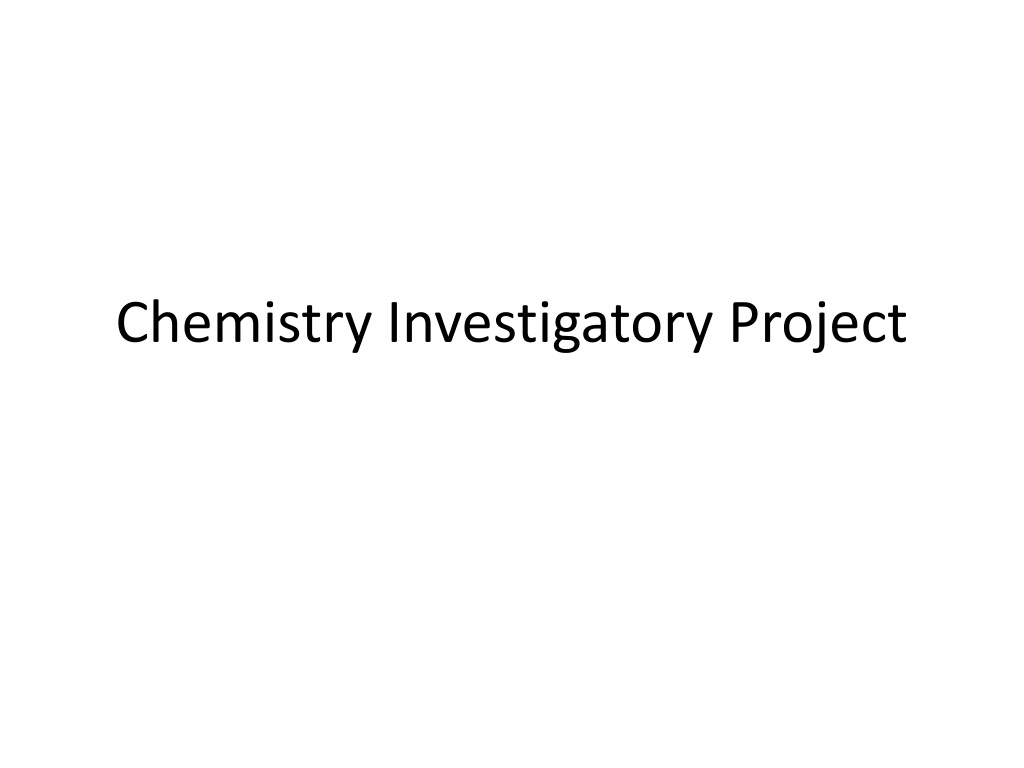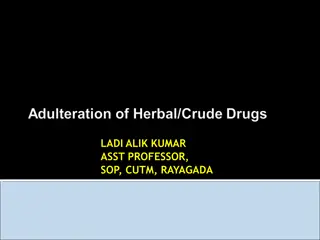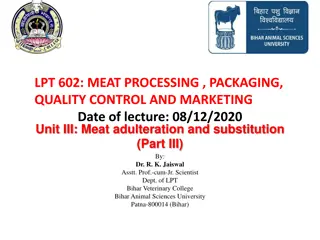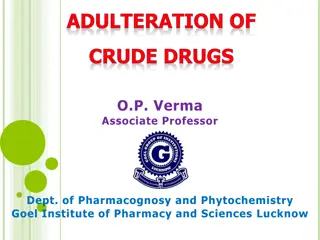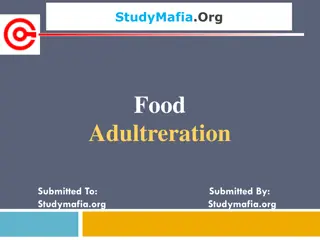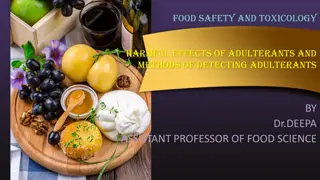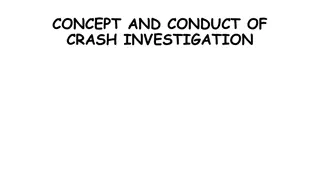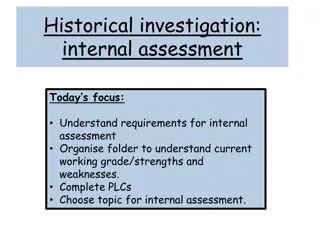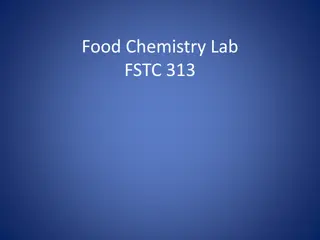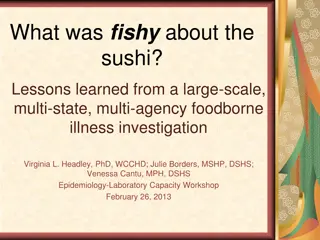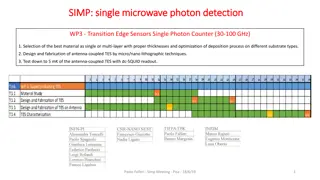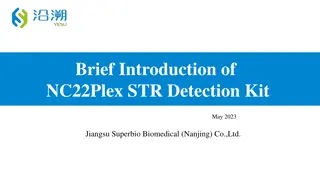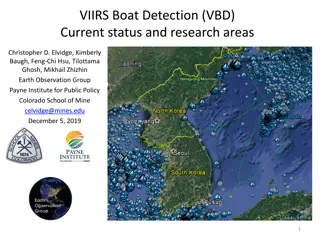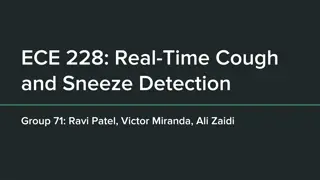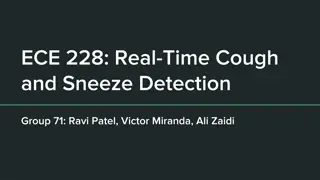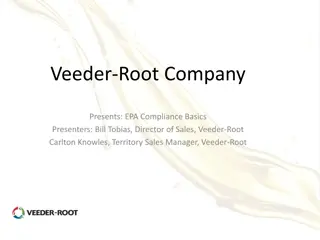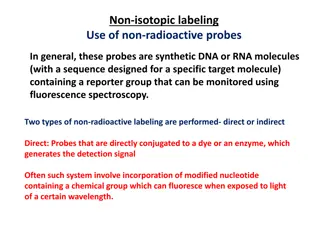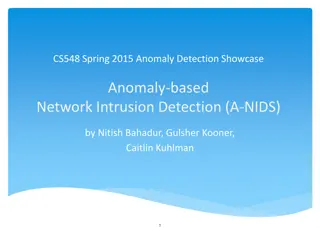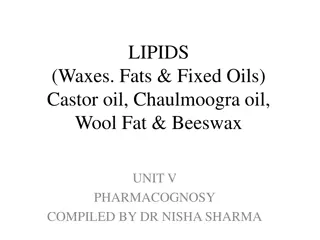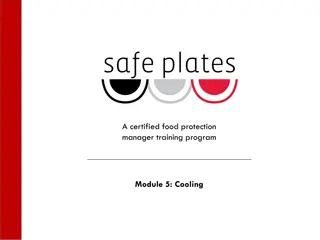Investigation on Detection of Food Adulteration in Chemistry
This chemistry investigatory project focuses on detecting food adulteration through various experiments. Experiment-1 aims to detect adulterants in fat, oil, and butter, while Experiment-2 investigates adulteration in sugar. Experiment-3 aims to detect adulterants in chili powder, turmeric powder, and pepper. Each experiment outlines the apparatus required and procedures for detecting common adulterants in the specified food items.
Download Presentation

Please find below an Image/Link to download the presentation.
The content on the website is provided AS IS for your information and personal use only. It may not be sold, licensed, or shared on other websites without obtaining consent from the author. Download presentation by click this link. If you encounter any issues during the download, it is possible that the publisher has removed the file from their server.
E N D
Presentation Transcript
DETECTION OF FOOD AULTERATION
index index 1.Experiment-1 2.Experiment-2 3.Experiment-3 4.Observation 5.Conclusion 6.Precaution
EXPERIMENT-1 AIM To detect the presence of adulterants In fat , oil butter. Apparatus Required Test tube , acetic anhydride conc. h2so4,acetic acid,conc.HNo3
P Procedure rocedure Common adulterants present in ghee and oil are paraffin wax, hydrocarbon, dyes andargemon oil. These are detected as follows : 1.Adulteration of paraffin wax hydrocarbon in vegetable ghee heat small amount of vegetable ghee with acetic anhydride. Droplets of oil floating on the Surface of unused acetic anhydride indicates the presence of wax or hydrocarbons.
2.Adulteration of dyes in fat heat 1ml of fat with a Mixture of 1ml of conc. Sulphuric acid and 4ml of acetic acid. Appearance of pink or red colour indicates presence of in fat. 3.Aduteration of argemone oil in edible oils to small amount of oil in a test-tube, add few drops of conc.HNo3 and shake. Appearance of red colour in The acid layer indicates presence of argemone oil.
Experiment-2 Aim To detect the presence of adulteration in sugar Apparatus required Test-tubes, dil. HCL. Procedure: Sugar in usually contaminated with washing soda and insoluble substance which are detected as follows:
1.Adulteration of various insoluble Substances in sugar takes small amount of sugar in a test-tube and shake it with little water. Pure sugar dissolves in water But insoluble impurities do not dissolve. 2.Aduteration of chalk powder, washing soda in sugar. To small amount of sugar in a test-tube, add few drops of HCL. Brisk effervescence of CO2 shows the presence of chalk powder or washing soda in the given sample of sugar.
Experiment-3 Aim To detect the presence of adulterants in sample of of chilli powder , Turmeric powder and pepper. Apparatus required: Test-tubes, conc. HCl, dil. HNO3, KI solution. Procedure: Common adulterants present in chilli powder, Turmeric powder and pepper or red coloured Lead salts, yellow lead salts and dried papaya seeds Respectively. They are detected as follows:
1.Adulteration of red lead salts in chilli powder, add dil.HNO3.Filter the dilsolution and add two drop of potassium iodide dilsolution and add 2drops of Potassium iodine solution to the filtrate. yellow ppt. Indicates the presence of lead salt in chilli powder. 2. Adulteration of yellow lead salts to turmeric powder a sample of turmeric powder conc. HCl. Appearance of magenta colour shows the presence of yellow oxides of lead in turmeric powder.
3. Adulteration of brick powder in red chilli powder Add small amount of given red chilli powder in beaker Containing water . Brick powder settle at the bottom While pure chilli powder floats over water. 4.Adulteration of dried papaya seeds in pepper to a beaker containing water and stir with a glass rod. Dried papaya seeds being lighter float over water While pure pepper settle at bottom
EXPT.NO. EXPERIMENT PROCEDURE OBSERVATION 1. Adulteration of paraffin Wax and Hydrocarbon In vegetable Ghee. Heat small Amount of vegetable Ghee with Acetic Anhydride Droplets of oil Floating on The surface of Unused acetic Anhydride indicate the Presence of Wax or Hydrocarbon. Appearance of oil floating On the surface. 2. Adulteration Of dyes in fat. Heat 1mL of fat with a mixture of 1mL of conc. H2SO4 and 4mL of acetic acid. Appearance of pink colour.
EXPT. NO. EXPERIMENT PROCEDUR E OBSERVATION 3. Adulteration of argemone oil in edible oils. To small amount of oil in a test tube , add few drops of conc.HNO3 and shake. No red colour observed. 4. Adulteration of various insoluble substances in sugar. Take small amount of sugar in test tube and shake with little water. Pure sugar dissolves in water but insoluble impurities do not dissolve.
EXPT.NO. EXPERIMENT PROCEDURE OBSERVATION 5. Adulteration of chalk powder , washing soda in sugar. To small amount sugar in a test tube , add a few drops of dil . HCl No brisk effervescence observed. 6. Adulteration of yellow lead salts to turmeric powder. To sample of turmeric powder , add conc . HCl Appearance of magenta colour. 7. Adulteration of red lead salts in chilli powder. To sample of chilli powder , add dil. HNO3. filter the solution and add 2 drops KI solution to the filtrate. No yellow precipitate.
EXPT.NO. EXPERIMENT PROCEDURE OBSERAVATION 8. Adulteration of brick powder in chilli powder. Add small amount of given red chilli powder in a beaker containing water . Brick powder settles at the bottom while pure chilli powder floats over water . 9. Adulteration of dried papaya seeds in pepper. Add small amount of sample of pepper to beaker containing water and stir with a glass rod. Dried papaya seeds being lighter float over water while pure pepper settles at bottom.
